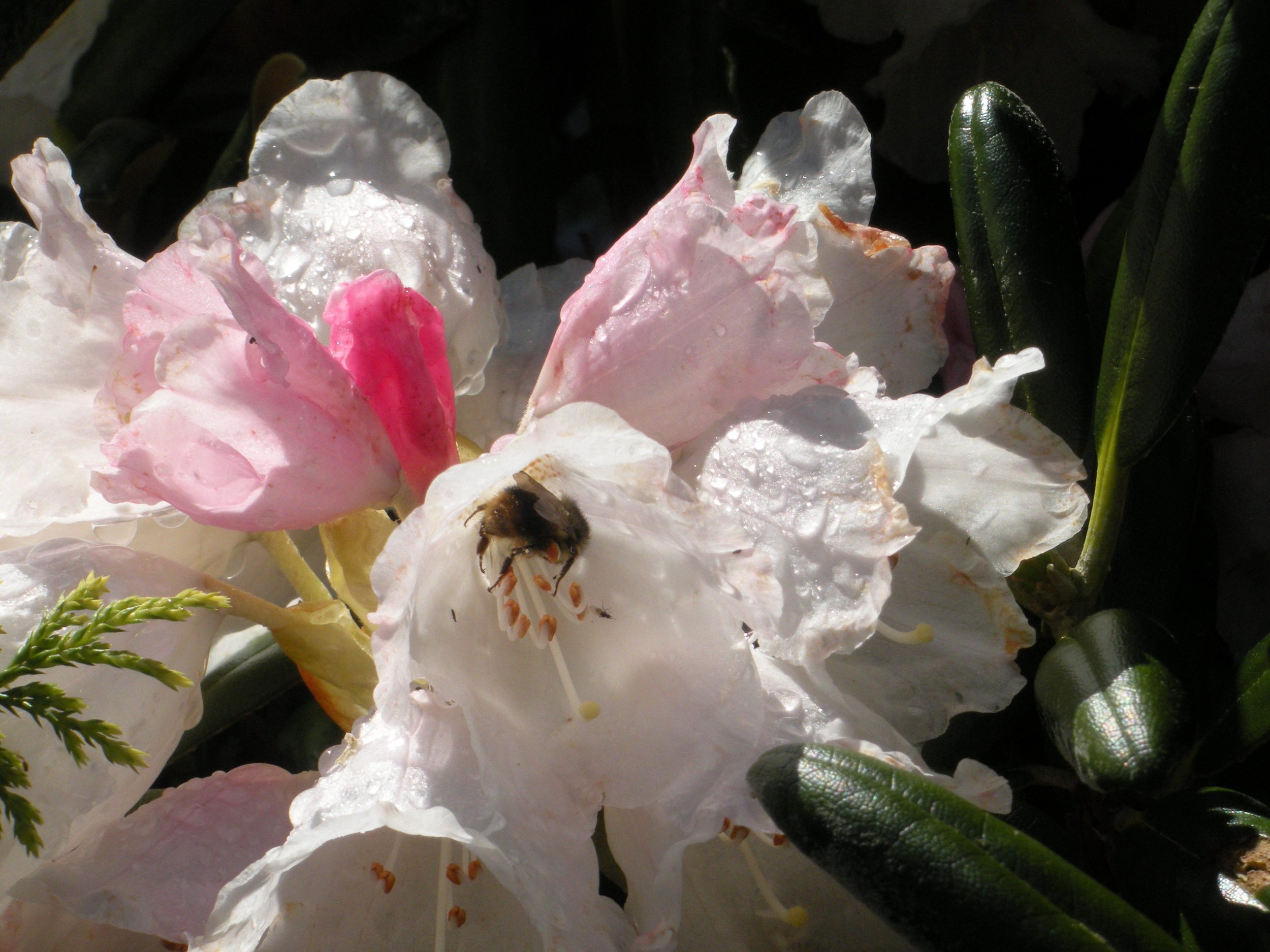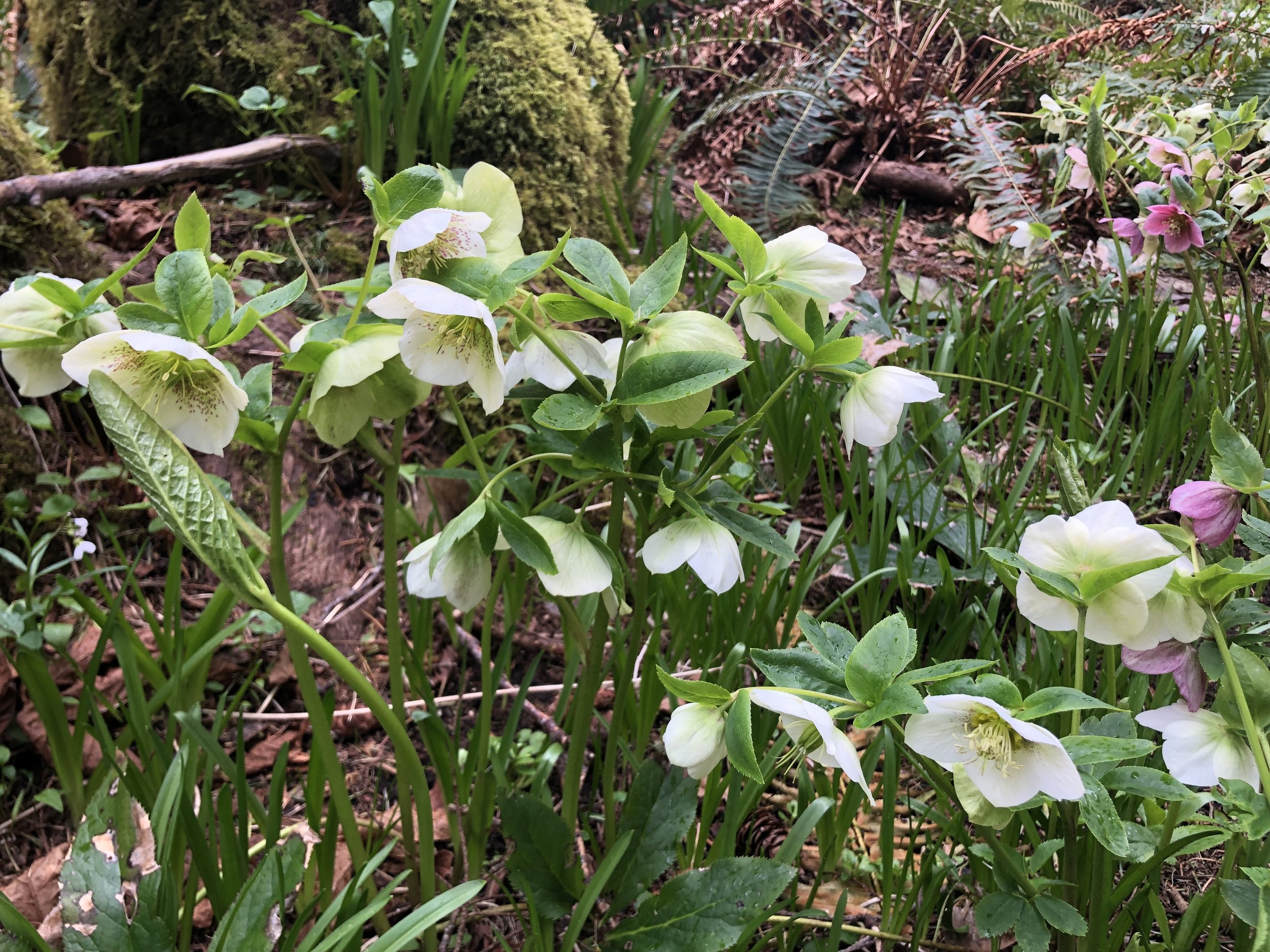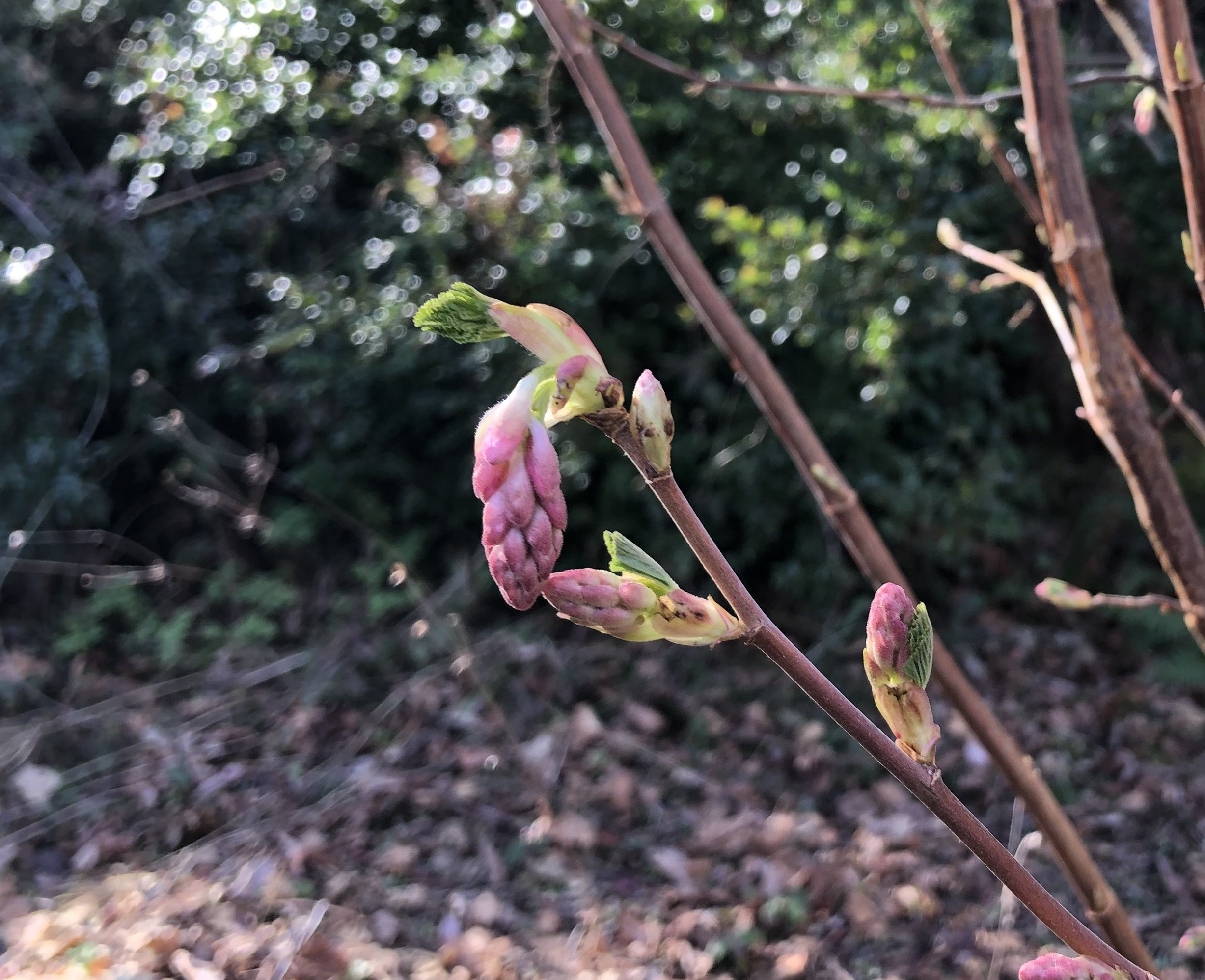On Sunday, May 7, board member Glenn Gustafson led a garden tour and bee program at the McLoughlin Gardens. Starting at the gate, we walked down to Gardens, looking to see what kinds of flowering plants, shrubs, and trees the bees were attracted to. Below are some of the strategies he shared to create bee-friendly gardens.
Gardening for the Bees!
Did you know that there are more than 800 species of bees in Canada and at least 450 species of bees in BC? We are actually very dependent on bees as 75% of the fruit, nuts and vegetables we depend on are pollinated by bees. The good news is that in spite of bee populations struggling in recent years, there is a lot urban and rural gardeners can do to support the survival and increase of native bees.
There are three basic needs can you provide for in your yard or garden to help increase native bee populations:
o Food – flowering plants provide the nectar (sugar) and pollen (proteins and fat) that bees need for energy and to feed their young.
o Fresh Water – Puddles, muddy areas and shallow water in between rocks provide accessible water sources for bees
o Shelter – Bees need areas protected from cold, wind and flooding. Sunny, bare areas of soil in out-of-the way places in gardens are attractive to native bees for nesting. Some native bees also nest in rotting logs or hollow stems.
Consider the following when selecting flowering plants for your location:
o Native plants (wildflowers) and heirloom plants (not hybrids) on average attract four times as many pollinators as non-natives. Use as many native plants as possible.
o Many ‘weedy’ plants such as dandelions and buttercups are early and important food sources for bees.
o Plant several colours of flowers – blue, violet, white and yellow flowers are the most attractive to bees.
o Plant many varieties to attract a diverse range of bees
o Provide a range of plants that bloom in succession throughout the season for your own enjoyment and to provide for the bees.
o Plant flowers of various shapes as bees of different species have different tongue lengths.
o Plant in sunny areas with some protection from wind as bees prefer these areas.
So when you’re next buying plants for your garden, think of the bees and choose something they will love too!




